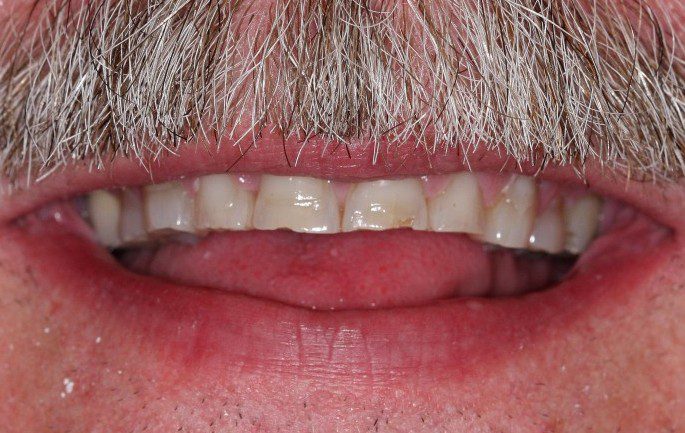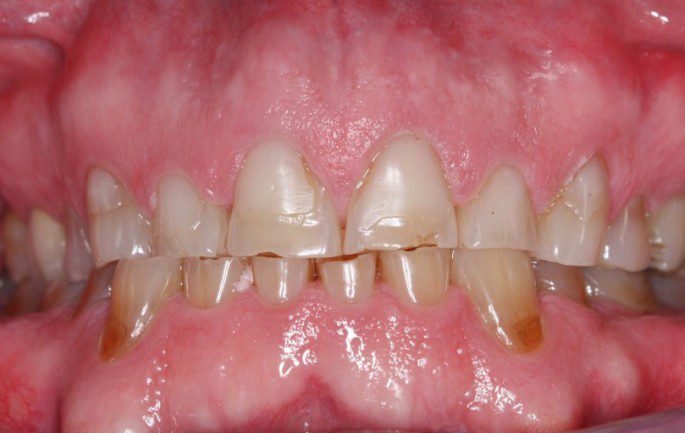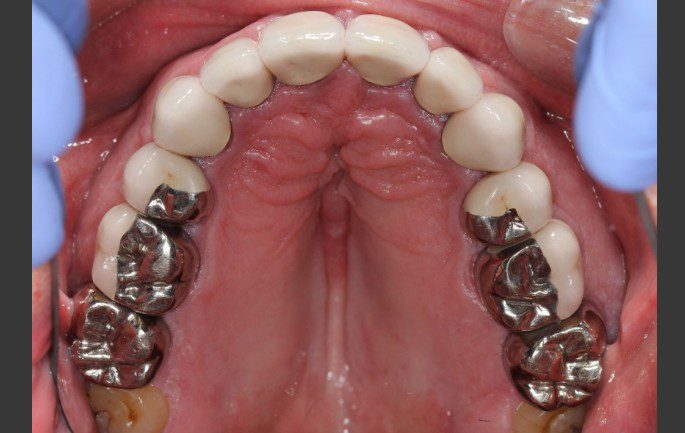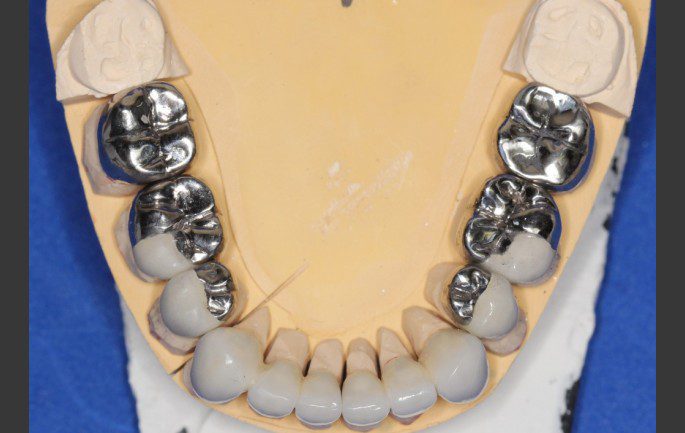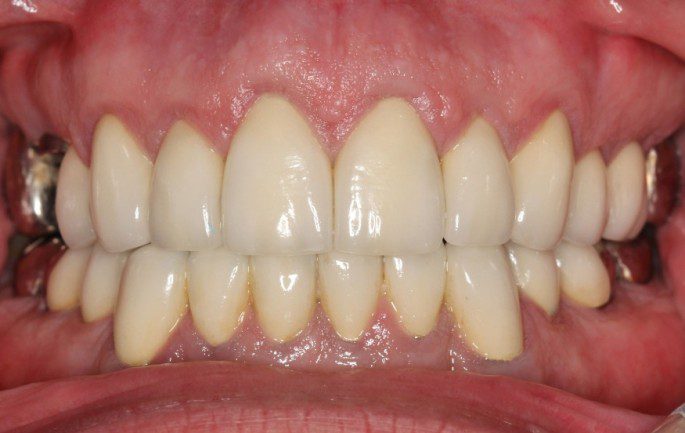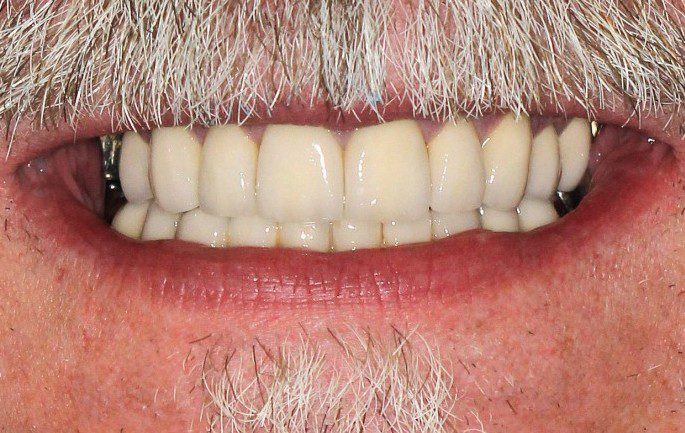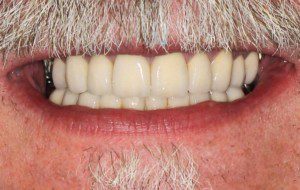
1 of 11
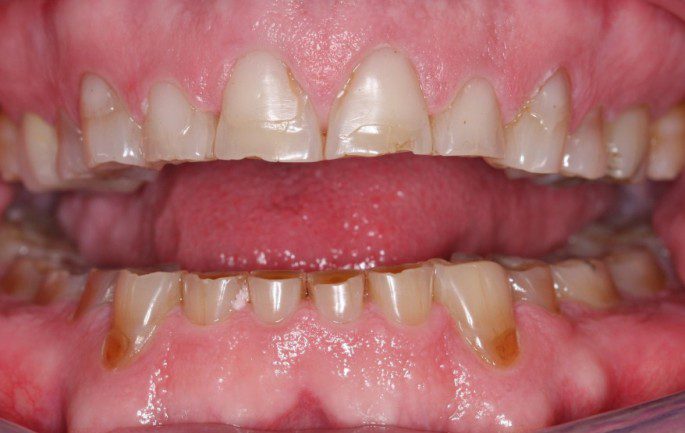
Close up view showing extreme tooth wear. This type of wear is called "abrasion" which means the loss of tooth structure through micro-particle loss as the teeth grind against each other usually during sleep. It is the same type of abrasion as using sandpaper on wood. The saw dust is readily evident as the sanding is done aggressively and in a dry environment. The same thing happens with teeth though it is much slower taking several decades to become obvious. If left untreated it can result in 50-80% loss of tooth structure as seen here. The main problem with this process is that it is fairly slow when the teeth still have enamel on the edges that touch the opposing teeth. Once the enamel is gone the underlying dentin is much softer and wears approximately four times faster.
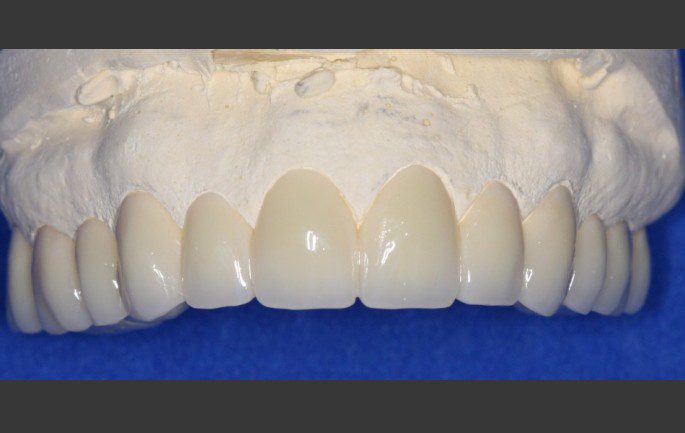
Temporary crowns are the key to successful outcomes for full mouth or full arch cases. The temporary crowns provide the dress rehearsal or road map to success of the permanent crowns, especially when teeth are this worn or unsightly. Well done temporary crowns give the dentist, the patient and the laboratory technician critical information about the esthetic considerations like size, length, midline and color as well as the equally invaluable information about function like bite, degree of opening when teeth are together (vertical dimension of occlusion) and how the teeth move together when the lower jaw moves (disocclusion or functional grinding). In many cases, more time is spent on the temporary crowns than on the permanent ones.
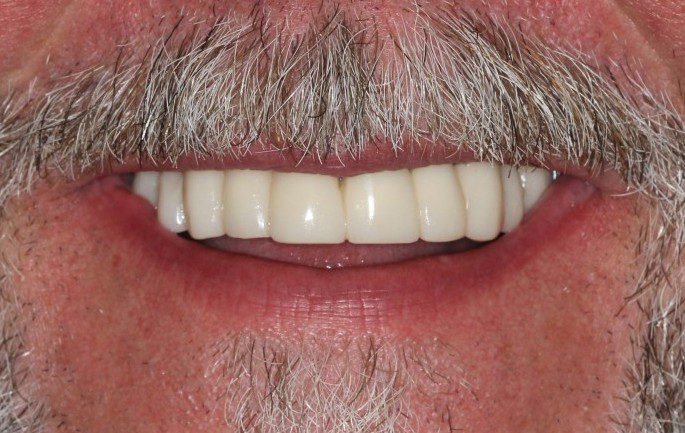
Smile view of temporary crowns. Note immediate improvement in esthetics. These temporary crowns are now our road map to fabrication of the permanent crowns.
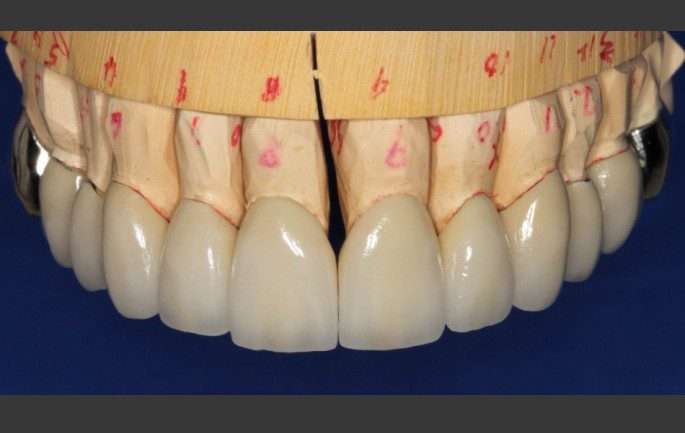
Frontal view of permanent crowns on laboratory model. The laboratory has used models and pictures of the patient's temporary crowns as guides to make the new ones.
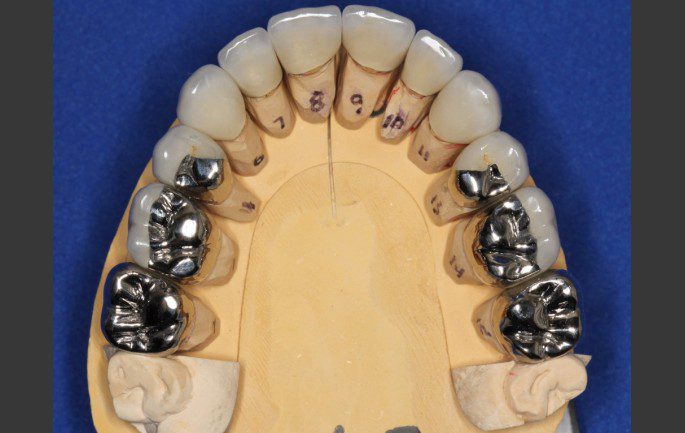
Top view permanent crowns. We advise some patients that the concept of "over-engineering" is in their best interest. In some male patients the bite force and wear patterns are so extreme that we advise them that the use of metal on the chewing and grinding surfaces will prevent fracture of the porcelain. As you can see from the smile picture (#11) none of the metal shows when the patient smiles, laughs or speaks. Our patients rarely need this extreme dental engineering but those who do appreciate this approach as they have been plagued by decades of broken teeth, broken porcelain and loss of tooth structure.

